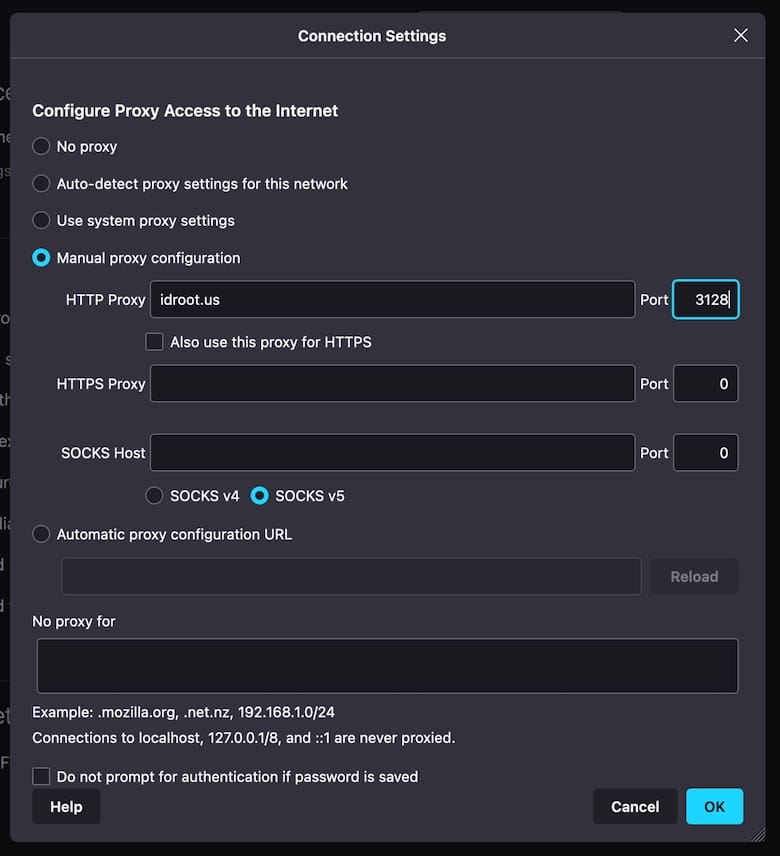How To Install Squid Proxy on CentOS Stream 10

In this tutorial, we will show you how to install Squid Proxy on CentOS Stream 10. In today’s digital landscape, proxy servers play a crucial role in managing network traffic, enhancing security, and optimizing bandwidth usage. Among the popular proxy server solutions, Squid stands out as a versatile and widely-used caching proxy server. This article will guide you through the process of installing and configuring Squid Proxy on CentOS Stream 10, ensuring that you have a robust and efficient proxy setup for your network needs.
Introduction to Squid Proxy
Squid is an open-source caching proxy server that supports HTTP, HTTPS, and FTP protocols. It is renowned for its ability to cache frequently accessed web pages, thereby reducing bandwidth consumption and improving response times. Squid’s extensive access controls make it an excellent choice for organizations seeking to monitor and manage web traffic effectively.
Benefits of Using Squid Proxy
- Caching: Squid caches frequently accessed web pages, reducing the need for repeated downloads and enhancing browsing speed.
- Access Control: It offers robust access control features, allowing administrators to restrict access to specific websites or content.
- Security: Squid can be configured to enhance network security by filtering out malicious traffic and enforcing authentication.
- Flexibility: It supports various protocols and can be easily integrated into existing network infrastructures.
Understanding Squid Proxy
Before diving into the installation process, it’s essential to understand Squid’s key features and capabilities:
- Caching Proxy: Squid acts as a caching proxy, storing frequently accessed web pages to reduce bandwidth usage.
- Access Control Lists (ACLs): Squid supports ACLs, which allow administrators to define access rules based on IP addresses, domains, or user identities.
- Authentication: Squid can be configured to require authentication for proxy access, ensuring that only authorized users can access the internet through the proxy.
Use Cases for Squid Proxy
- Corporate Networks: Squid is often used in corporate environments to monitor and control employee internet access.
- Educational Institutions: It helps educational institutions manage student internet access and filter out inappropriate content.
- Home Networks: Squid can be used in home networks to control children’s internet access and enhance browsing speeds.
Prerequisites for Installation
Before installing Squid Proxy on CentOS Stream 10, ensure you have the following prerequisites:
- CentOS Stream 10 Operating System: Ensure that your server is running CentOS Stream 10.
- Root Access or Sudo Privileges: You need administrative privileges to install and configure Squid.
- Terminal Access: Access to a terminal window is necessary for executing commands.
- Internet Connection: A stable internet connection is required for downloading the Squid package.
System Preparation
Update System Packages
To ensure your system is up-to-date, run the following command:
sudo dnf update -yThis command updates all system packages to their latest versions.
Install EPEL Repository
Squid is not included in the default CentOS Stream 10 repositories. You need to install the EPEL (Extra Packages for Enterprise Linux) repository to access Squid:
sudo dnf install https://dl.fedoraproject.org/pub/epel/epel-release-latest-10.noarch.rpmConfigure Firewall Settings
Ensure that your firewall allows traffic on the Squid port. By default, Squid listens on port 3128. You can configure your firewall using `firewalld`:
sudo firewall-cmd --permanent --add-service=squid
sudo firewall-cmd --reloadIf Squid is not listed as a service, you may need to add a custom rule for port 3128:
sudo firewall-cmd --permanent --add-port=3128/tcp
sudo firewall-cmd --reloadInstallation Process
Install Squid Package
With the EPEL repository installed, you can now install Squid:
sudo dnf install squid -yVerify Installation
To confirm that Squid is installed correctly, check the package information:
rpm -qi squidStart Squid Service
Start the Squid service and enable it to start automatically on boot:
sudo systemctl enable --now squidVerify Squid Status
Check the status of the Squid service to ensure it is running:
sudo systemctl status squidBasic Configuration
Squid’s configuration file is located at `/etc/squid/squid.conf`. Here are some essential configurations to get you started:
Open Squid Configuration File
Use your preferred text editor to open the configuration file:
sudo nano /etc/squid/squid.confConfigure HTTP Port
By default, Squid listens on port 3128. You can change this if needed:
http_port 3128If you want to use a different port, simply replace `3128` with your desired port number.
Allow HTTP Access
Initially, Squid is configured to deny all HTTP access. Change this to allow access:
http_access allow allRestart Squid Service
After making changes to the configuration file, restart the Squid service:
sudo systemctl restart squidAdvanced Configuration
Access Control Lists (ACLs)
ACLs allow you to define access rules based on IP addresses, domains, or user identities. Here’s an example of how to create an ACL for a specific IP address:
acl mynetwork src 192.168.1.0/24
http_access allow mynetworkThis configuration allows access to the proxy for devices on the `192.168.1.0/24` network.
Authentication Setup
To add an extra layer of security, you can configure Squid to require authentication. This involves setting up an authentication helper like `squid_ldap_auth` or `squid_ntlm_auth`.
- Install Authentication Helper: For example, to use LDAP authentication, install the necessary package:
sudo dnf install squid-ldap-auth -y- Configure Authentication in Squid.conf:
auth_param basic program /usr/lib64/squid/squid_ldap_auth -R -b "dc=example,dc=com" -D "cn=admin,dc=example,dc=com" -w "your_password"
auth_param basic children 5
auth_param basic realm My Proxy
auth_param basic credentialsttl 2 hours- Define ACL for Authenticated Users:
acl authenticated proxy_auth REQUIRED
http_access allow authenticatedBandwidth Control
You can control bandwidth usage by setting limits on the amount of data that can be transferred. This is useful for managing network resources:
delay_pools 1
delay_class 1 1
delay_access 1 allow all
delay_access 1 deny !authenticated
delay_parameters 1 -1/-1 -1/-1Logging Configuration
Squid logs are crucial for monitoring and troubleshooting. You can customize log settings in the `squid.conf` file:
access_log /var/log/squid/access.log squidSecurity Considerations
Implementing Access Restrictions
Use ACLs to restrict access to specific websites or domains:
acl blocked_sites dstdomain .example.com
http_access deny blocked_sitesSetting Up Authentication
As mentioned earlier, authentication adds a layer of security by ensuring only authorized users can access the proxy.
Securing Proxy Communications
Consider using HTTPS for proxy communications to encrypt data:
https_port 3129 cert=/path/to/cert.pem key=/path/to/key.pemBest Security Practices
- Regularly Update Squid: Ensure Squid is updated to the latest version to patch security vulnerabilities.
- Use Strong Authentication: Implement robust authentication mechanisms to prevent unauthorized access.
- Monitor Logs: Regularly review Squid logs to detect and respond to security incidents.
Client Configuration
System-Wide Proxy Settings
To configure your system to use the Squid proxy, you can set environment variables:
export http_proxy=http://your_squid_server_ip:3128
export https_proxy=http://your_squid_server_ip:3128Browser-Specific Configuration
In your web browser, go to the network settings and enter the Squid proxy details:
- Proxy Server: `
your_squid_server_ip` - Port: `3128`

Testing Proxy Connectivity
After configuring your client, test the proxy by accessing a website. You can verify that the proxy is working by checking the Squid logs or using tools like `curl`:
curl -x http://your_squid_server_ip:3128 http://example.comCongratulations! You have successfully installed Squid. Thanks for using this tutorial for installing the Squid proxy server on the CentOS Stream 10 system. For additional help or useful information, we recommend you check the official Squid website.